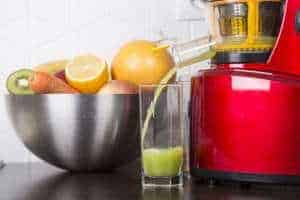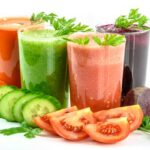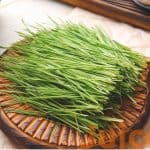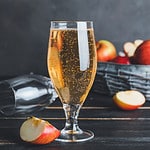Do you want to add more fruits and vegetables to your diet? Due to the difficulties of consuming them whole, many people prefer going for juicing or blending. So, are juicers and blenders the same?
What many people fail to understand is that these are two separate processes. Understanding the differences can help you make the most out of both.
Are Juicers and Blenders the Same?
They are most definitely not the same, even though the reasons for using them are similar. The function of a juicer is to extract all the liquids from the ingredients to make juices. You discard everything else as pulp. In a blender, all the ingredients are whirled together.
Often, a bit of water is also added to help liquefy the ingredients. The smoothie so created contains the pulp of the ingredients as well as the rest of the nutrients.
You can use both of these appliances for creating delicious drinks with fruits and vegetables. They both help you consume more fruits and vegetables. However, the processes of juicing and blending differ in the benefits they provide.
Juicing Vs. Blending
One of the main differences between juicers and blenders is that juicing gets rid of the fiber content while blending keeps it. Fiber removal is not always a bad thing.
There can be situations in which your digestive system requires a bit of a rest from the fiber. People with sensitive digestive systems can benefit from a diet low in fiber. Low-fiber diets can also be beneficial for those who are recovering from an illness or injury.
Juices are gentler on the digestive system, being easier to digest. The nutrients in juices can be absorbed faster as well.
Blending will be beneficial to people with blood-sugar problems. Fiber slows down the rate at which you absorb sugar from the body into the bloodstream.
This slowing down avoids sugar spikes, which can be dangerous for people with diabetes. Due to the fibrous pulp content of the smoothies, they increase satiety and reduce hunger pangs.
Additionally, blenders are capable of processing more ingredients than juicers. This capability allows for a greater diversity of recipes for smoothies.
Benefits of Blending
Read on and discover the benefits of blending.
Releasing Energy Steadily
Blended smoothies contain fiber which slows down the digestive process. The energy produced will be released in a slow, steady and even manner, avoiding sugar highs. You will feel satiated for longer as well.
Reduced Waste
Blending makes use of everything that you have added. You don’t separate pulp or fiber for disposal as waste.
Improved Digestion
The fiber content of the ingredients can impact your metabolism positively. It cleans the digestive system of toxins and promotes regular bowel elimination. The digestive capabilities are improved.
Benefits of Juicing
Juicing has just as many benefits as blending does.
Easier Digestion
Since juices are mostly liquid to the removal of fiber, it becomes easier for the digestive system to process it. People suffering from certain digestive problems can benefit from avoiding fiber.
Juices allow them to consume enough nutrients without eating fiber in the process.
Faster Absorption
A lack of fiber makes it easier for the body to absorb the minerals and vitamins in the juices. The body can take advantage of the beneficial properties of the nutrients faster as a result.
More Fruits and Vegetables
The elimination of fiber and pulp decreases the bulk of the juices. As a result, more fruits and vegetables can be juiced to make a glass of the drink. This reduction increases the nutrient content you are consuming.
The Types of Blenders
If you are interested in blending, you need to understand which type of blender will be more suitable for you. There are mainly two types of blenders.
Jug Blender
These appliances are suitable for general use in the kitchen. While capable of making great smoothies, you should not opt for cheaper models.
Cheaper models can find it difficult to blend hard vegetables, nuts, and seeds smoothly. When it comes to softer foods such as yogurt, soft fruits, butter and honey, these devices work perfectly.
Jug blenders have a higher capacity, allowing you to make smoothies for the entire family if you want. They are most suitable for larger families.
Single Serving Blenders
These mixers have become popular in recent years. Their main feature is the cup or the flask in which you make the blends. The cup is detachable and comes with a lid. Ingredients can be added to the container directly which is then attached to the blender’s blades.
After blending, you detach the cup and add the lid. You can now enjoy the smoothie while on the go. The designs are simple, and they are easy to use.
The Types of Juicers
If you are interested in juicing, it helps to know the different types of juicers that you can choose.
Centrifugal Juicers
These appliances work using a rotating metal blade that pushes the ingredients against a strainer. This way, the juice is extracted which you drain into a container. You can then dispose of the pulp left behind.
One of the main features of these juicers is their low price, resulting in their high popularity. The blades generate a lot of heat which can destroy some of the nutrients, which is a major drawback.
Nonetheless, these appliances are good choices for anyone who wants to try juicing.
Masticating Juicers
Also known as cold press juicers, these appliances work by crushing and pressing the ingredients for extracting the juice. They are quite slow in their operation, but they are highly efficient as well.
Since they produce no heat, the nutrient content of the juice remains intact. The larger size and higher cost of this type of juicer have affected the popularity of masticating juicers .
Nonetheless, they are excellent choices for juicers who want to get the most out of their drinks.
Both juicing and blending have their proponents, and the fact is that they are equally good. While juicers and blenders are different, they can help you consume the beneficial nutrients from fruits and vegetables, making them good choices for those who want to take care of their health.
So to answer the question ‘Are juicers and blenders the same?‘ the answer is no they are not. You now know the difference between juicers and blenders and can buy with confidence whether for juicing or blending.








